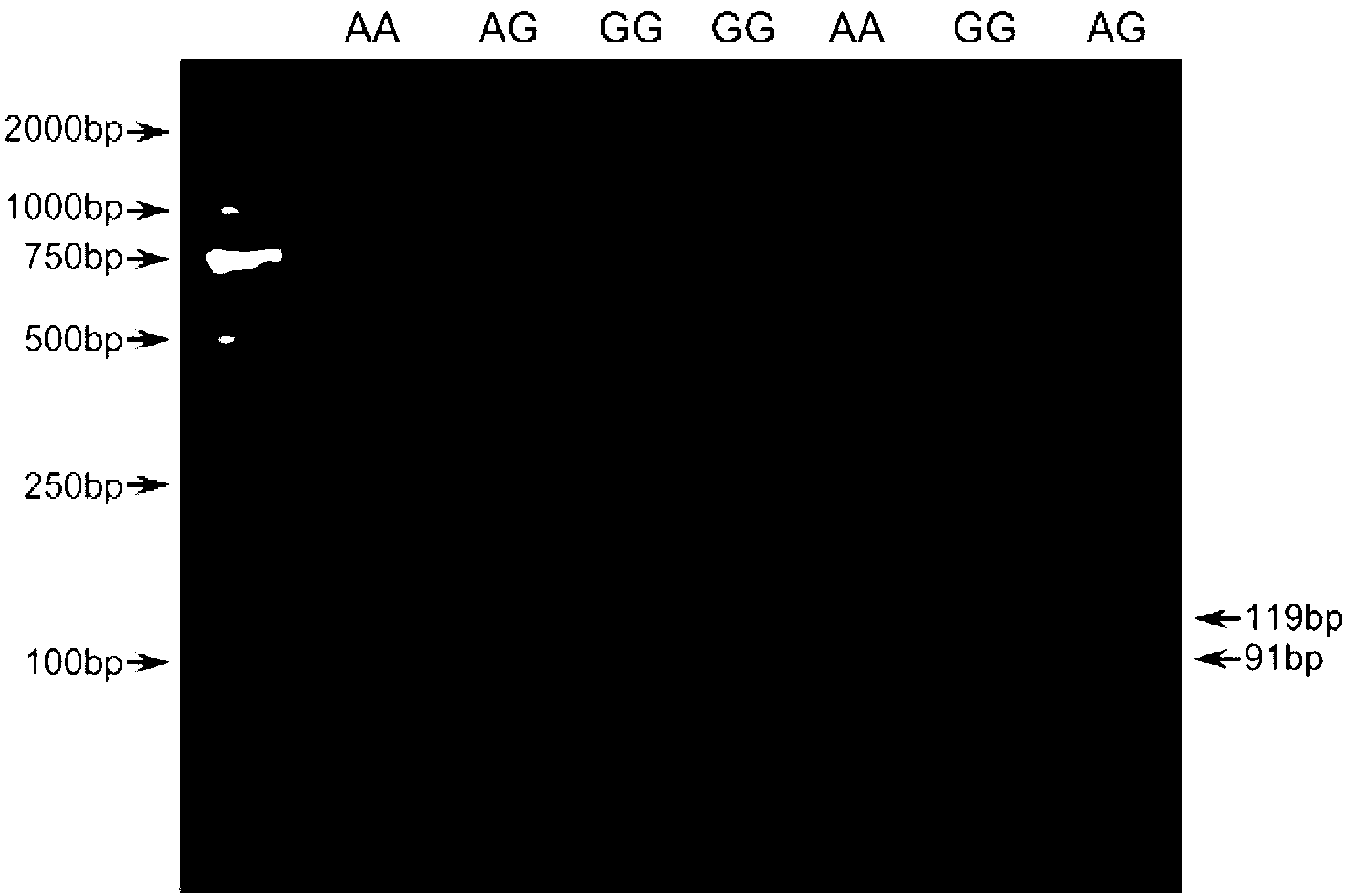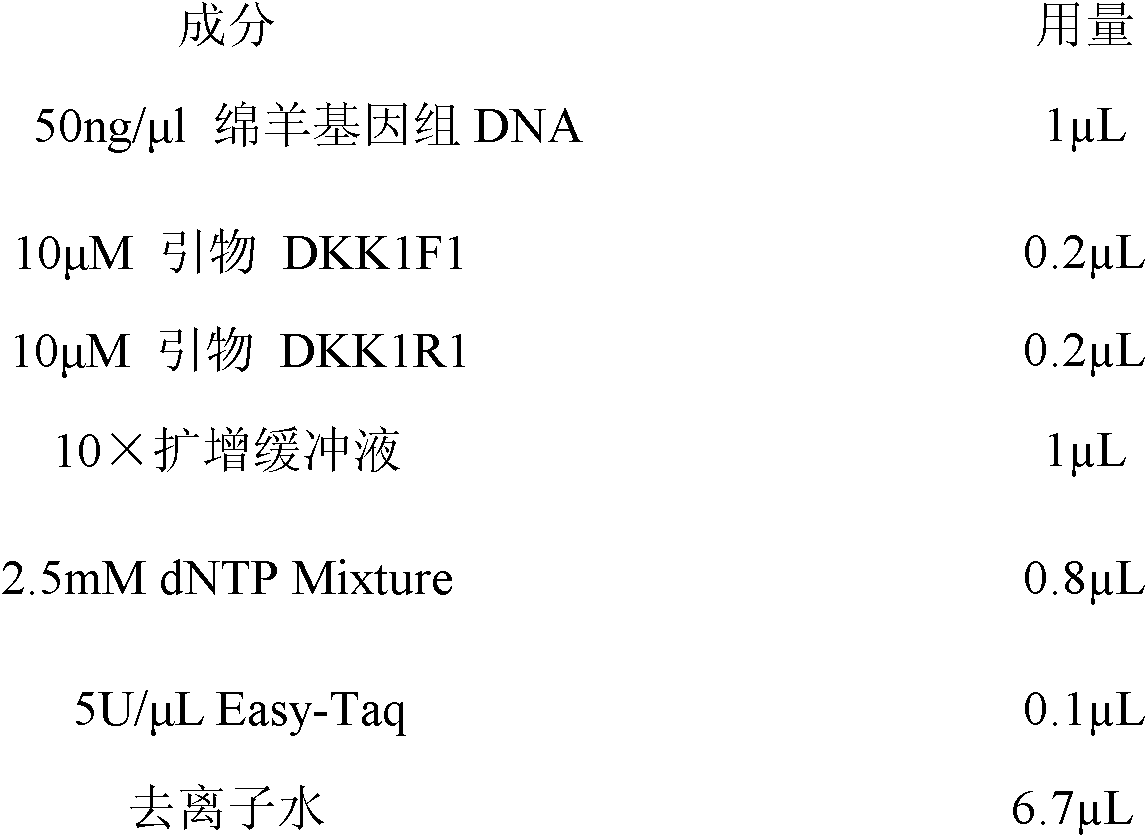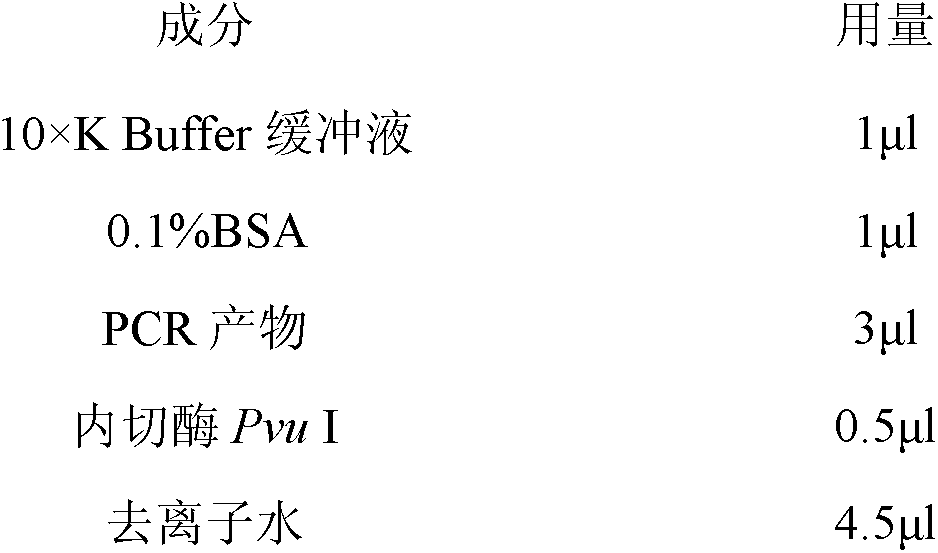Molecular marking method for predicting and identifying length of sheep wool
A technology of molecular markers and sheep, applied in the direction of biochemical equipment and methods, microbial measurement/inspection, etc., to achieve the effect of low cost, high accuracy, and accelerated breeding process
- Summary
- Abstract
- Description
- Claims
- Application Information
AI Technical Summary
Problems solved by technology
Method used
Image
Examples
specific Embodiment approach 1
[0021] Embodiment 1: In this embodiment, the molecular marker method for predicting and identifying the length of sheep wool is carried out according to the following steps:
[0022] 1. Using the phenol / chloroform method to extract sheep genomic DNA from the ear tissue of Chinese Merino sheep, design primers DKK1F1 and DKK1R1 according to the c.576A>G site of the fourth exon region of the sheep DKK1 gene, and then analyze the sheep genome Carrying out PCR amplification of the DNA to obtain a PCR amplification product, and then digesting the PCR amplification product with endonuclease Pvu I to obtain a digestion product;
[0023] 2. Use agarose gel with a concentration of 2.5% to electrophoresis separate the digested products, and then determine the genotype according to the electrophoresis separation results. The criteria for determination: ① Electrophoresis presents a band with a size of 119bp, which means that the sheep DKK1 gene is 4th The c.576A>G site in the exon region w...
specific Embodiment approach 2
[0054] Specific embodiment two: the difference between this embodiment and specific embodiment one is that the reaction system for PCR amplification in step one is a 10 μL reaction system, which consists of the following components:
[0055]
[0056] PCR amplification conditions were: 94°C pre-denaturation for 5 min, 94°C denaturation for 30 s, 52°C annealing for 30 s, 72°C extension for 8 s, a total of 33 cycles, 72°C extension for 7 min, and 4°C incubation. Others are the same as in the first embodiment.
specific Embodiment approach 3
[0057] Specific embodiment three: the difference between this embodiment and specific embodiment one or two is that the enzyme digestion system in step one is as follows:
[0058]
[0059] Enzyme digestion conditions are: 37 ° C enzyme digestion 1-2h. Others are the same as in the first or second embodiment.
[0060]
PUM
 Login to View More
Login to View More Abstract
Description
Claims
Application Information
 Login to View More
Login to View More - R&D
- Intellectual Property
- Life Sciences
- Materials
- Tech Scout
- Unparalleled Data Quality
- Higher Quality Content
- 60% Fewer Hallucinations
Browse by: Latest US Patents, China's latest patents, Technical Efficacy Thesaurus, Application Domain, Technology Topic, Popular Technical Reports.
© 2025 PatSnap. All rights reserved.Legal|Privacy policy|Modern Slavery Act Transparency Statement|Sitemap|About US| Contact US: help@patsnap.com



